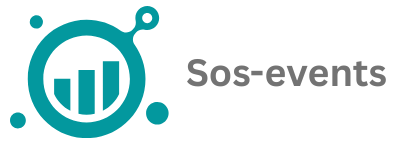In a world where pajamas are the new business casual, working from home has become the norm. But just because the commute is a mere stroll to the kitchen doesn’t mean productivity should take a vacation. Mastering the art of remote work is essential for success, and it’s time to ditch the distractions—like that Netflix series that’s calling your name.
Whether it’s setting up a dedicated workspace or avoiding the siren song of midday snacks, best practices for working from home can transform chaos into creativity. With the right strategies, anyone can turn their living room into a powerhouse of productivity. So grab that coffee, put on some real pants, and get ready to unlock the secrets to thriving in your home office.
Table of Contents
ToggleSetting Up Your Workspace
Creating an efficient workspace at home is essential for productivity. A well-structured environment sets the tone for focused work and minimizes distractions.
Choosing the Right Location
Selecting a location plays a crucial role in establishing an effective workspace. Pick a spot away from high-traffic areas in the home, ensuring quiet surroundings. Lighting matters; natural light enhances mood and alertness. Consider a room with a window, if possible. Avoid working from the bedroom, as it can blur lines between work and rest. Designate a space solely for work, helping to create a mental separation from leisure activities.
Ergonomic Considerations
Ergonomics improves comfort and reduces strain during work hours. Use a chair that supports the lower back, promoting better posture. Position the computer screen at eye level to prevent neck strain. Keep the keyboard and mouse within easy reach to minimize wrist discomfort. Take regular breaks to stretch and move around, encouraging good circulation. Invest in ergonomic accessories, such as wrist rests and footrests, that cater to personal comfort and promote well-being.
Establishing a Routine


Establishing a routine significantly enhances productivity and work-life balance while working from home. Adapting daily practices can lead to better time management and improved overall well-being.
Time Management Techniques
Setting specific work hours keeps focus sharp. Creating a daily schedule after identifying tasks and prioritizing them fosters accountability. Utilizing tools like timers encourages task completion in dedicated time blocks. Organizing daily tasks by urgency helps maintain momentum throughout the day. Regularly reviewing progress ensures adjustments can be made as needed. A consistent schedule allows for smoother transitions, minimizing distractions when focusing on work responsibilities.
Breaks and Downtime
Taking regular breaks refreshes the mind and sustains productivity. Scheduled intervals of 5 to 10 minutes every hour can help prevent burnout. Engaging in light physical activity during breaks promotes circulation and mental clarity. Incorporating time for stretching or quick walks into the routine enhances overall health. Downtime provides a crucial opportunity to recharge, fostering a more effective work experience in the long run. Balancing work with restorative breaks leads to sustained focus and creativity throughout the day.
Communication Strategies
Effective communication is vital for successful remote work. Implementing strategic approaches enhances collaboration and productivity.
Utilizing Technology
Leverage collaboration tools like Slack, Microsoft Teams, or Zoom for seamless communication. Use project management software such as Trello or Asana to track tasks and deadlines. Enable notifications to stay updated on important messages and changes. Utilize screen sharing during meetings to clarify discussions, ensuring everyone understands project objectives. Access cloud storage solutions like Google Drive for easy document sharing. These technologies create a more connected work environment, promoting transparency and efficiency.
Staying Connected with Colleagues
Maintain regular check-ins with team members through daily or weekly meetings. Fostering relationships through informal catch-ups can build camaraderie, making collaboration smoother. Schedule virtual coffee breaks to engage in casual conversations. Encourage open discussions about challenges or roadblocks within the team. Sharing successes and celebrating achievements fosters a sense of unity and motivation. Prioritize clear and timely communication to prevent misunderstandings, keeping everyone aligned on goals.
Maintaining Work-Life Balance
Maintaining a healthy work-life balance is crucial for remote workers. It prevents burnout and boosts overall productivity.
Setting Boundaries
Establishing clear boundaries separates work from personal life. Designate specific work hours and communicate these to family and friends. Avoid responding to work-related messages outside these hours. Use physical barriers, like closing a door, to indicate work time. Establishing a routine helps foster those boundaries. Creating a dedicated workspace signals the start and end of the workday, enabling a mental shift from professional tasks to relaxation.
Prioritizing Self-Care
Prioritizing self-care supports mental and physical health while working from home. Carve out time for regular exercise to keep energy levels high. Choose activities that promote well-being, like yoga or short walks outside. Schedule breaks throughout the day to recharge both body and mind. Incorporating mindfulness practices, such as meditation, can enhance focus and reduce stress. Hydration and balanced meals also bolster energy, making self-care essential for sustaining productivity. Emphasizing these practices contributes to a fulfilling work-from-home experience.
Staying Productive
Maintaining productivity while working from home requires deliberate strategies and effective techniques. Implementing structured approaches can greatly enhance focus and efficiency.
Goal Setting and Tracking
Setting specific, measurable goals provides direction and purpose. One effective method involves writing down daily objectives to boost accountability. Tracking progress visually, through tools like charts or checklists, encourages motivation. Breaking larger tasks into smaller, manageable steps enhances a sense of achievement. Regularly reviewing these goals helps identify areas needing adjustment. Creating a consistent routine allows for proactive adjustments, reinforcing commitment to productivity.
Minimizing Distractions
Minimizing distractions plays a vital role in improving focus. Choosing a designated workspace away from family members or noisy areas enhances concentration. Using noise-cancelling headphones or playing background music can further reduce external interruptions. Limiting access to social media or digital entertainment during work hours is essential. Scheduling specific times for personal tasks can also prevent splintered focus. Setting clear boundaries and communicating them to roommates or family members fosters an environment conducive to productivity.




